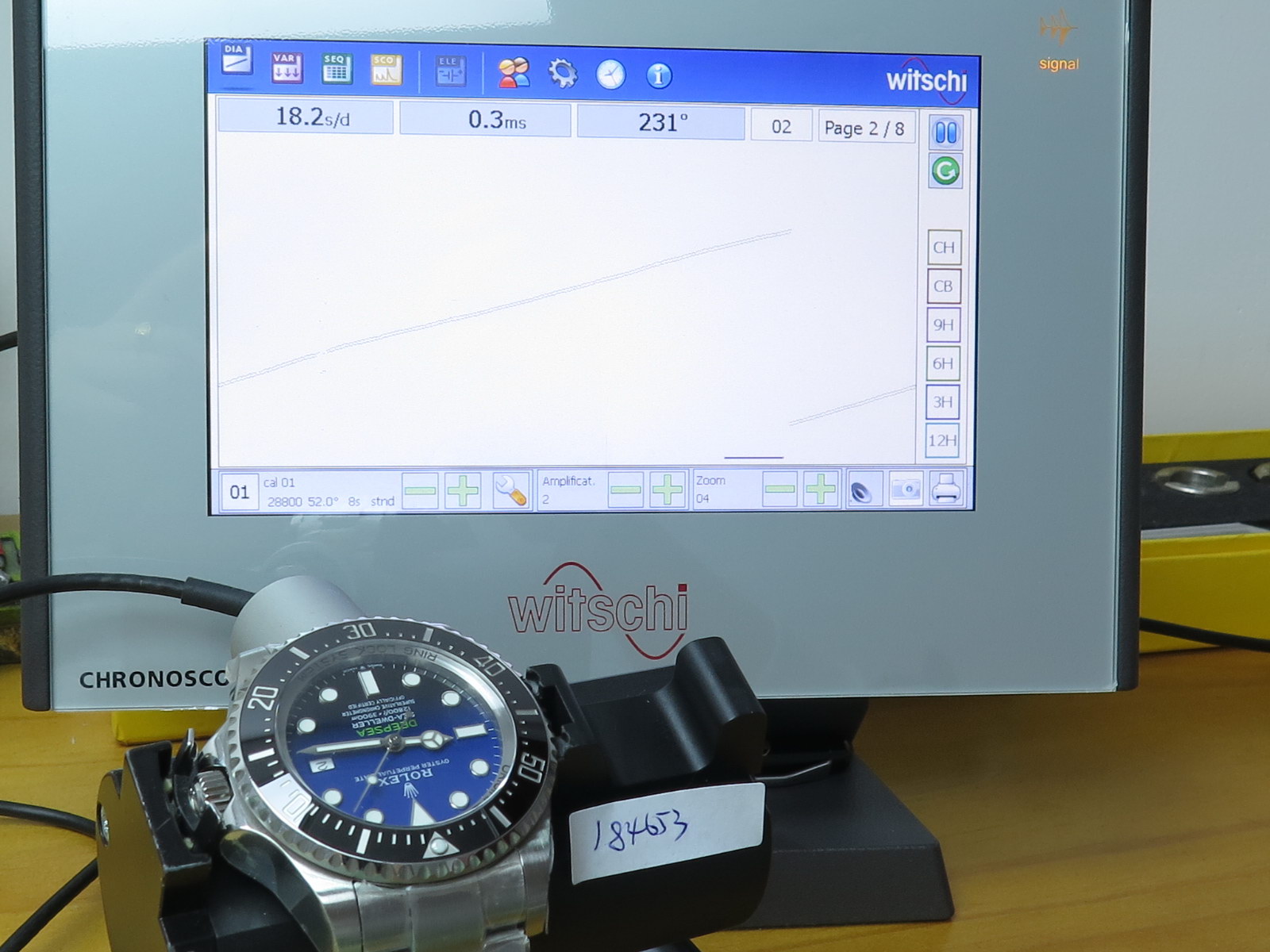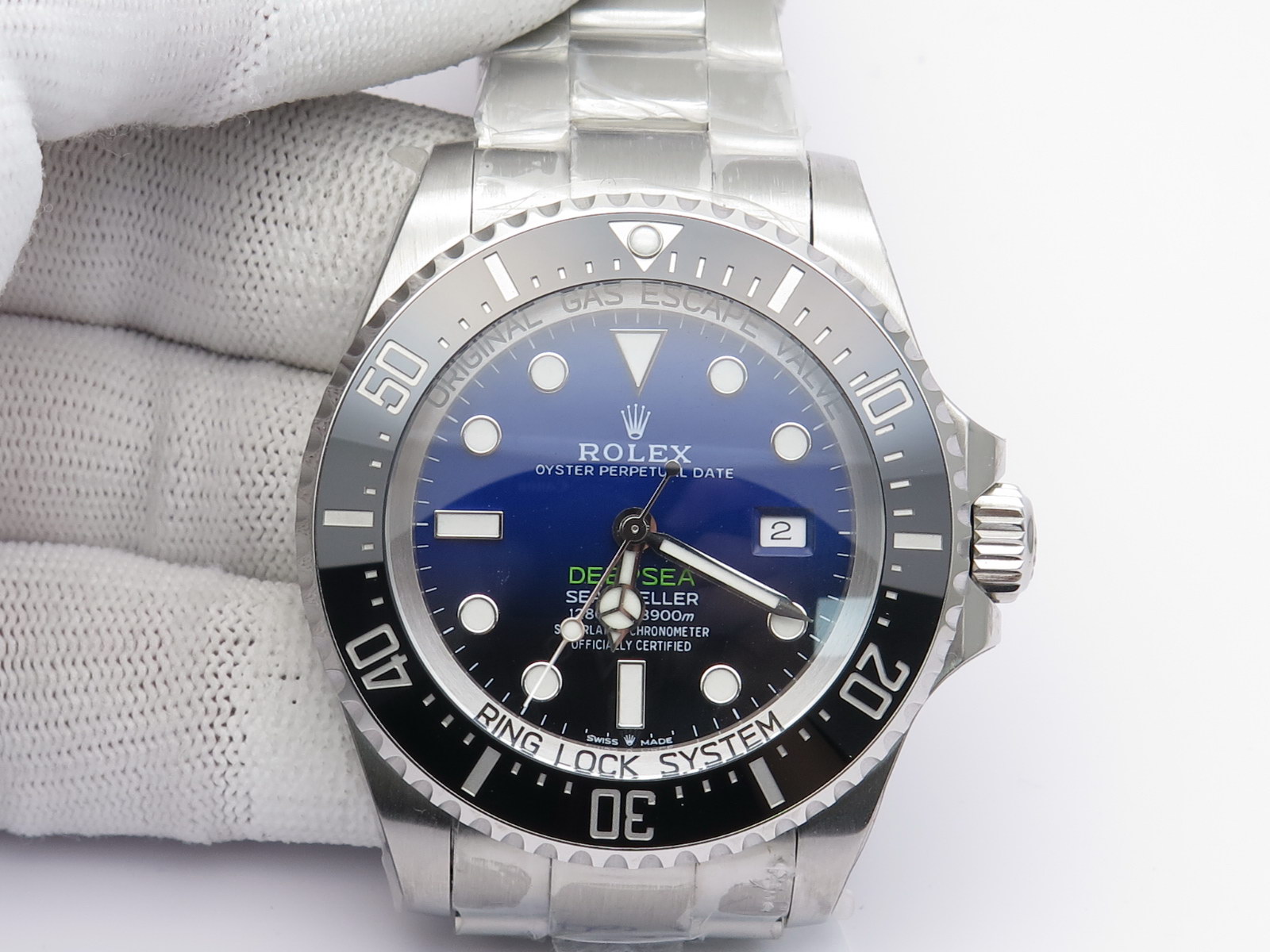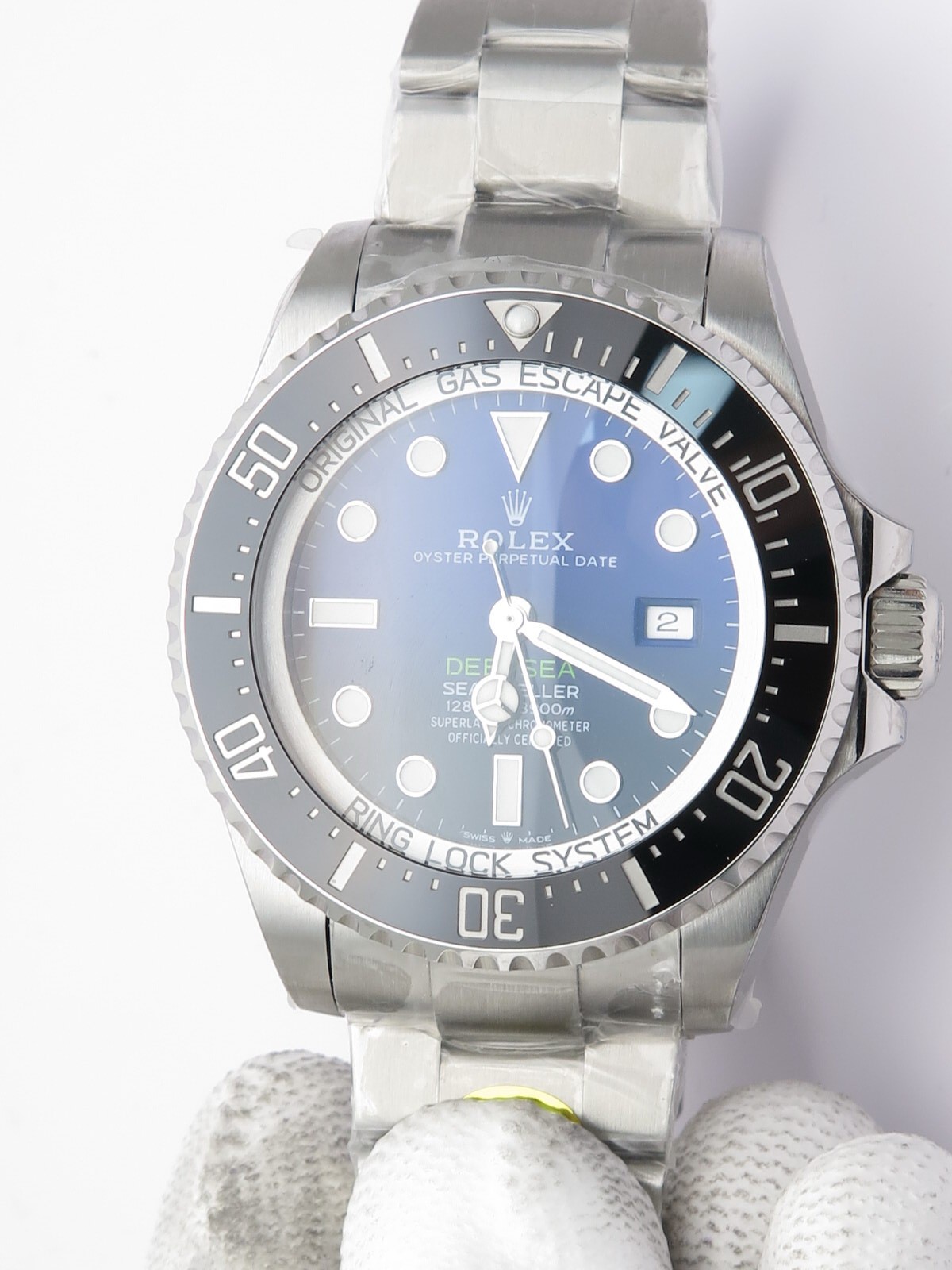Tangokilo, your Rate at 18.2 s/d is "acceptable." Beat Error at 0.3 is "Great." The Amplitude at 231 "amount of rotation in the swing of the balance wheel" is too low. This measures the "health" of the movement. However, as another person posted, you are seeing just a quick snapshot, that does not really mean much because the timegraph results change almost every second. However, personally, I would want to see better results in Amplitude, as that is "possibly" an indicator of "health" movement issues. The flat pearl is correct, but a bit "'plastic" looking, but is properly flat, and probably the best your going to get right now The gap between the SEL is a tad too large, but I personally could live with that. The dials that I have gone through have been too dark on top, so it's nice to see the blue, actually look blue, though it does go down just a bit too far in the gradient portion. Again, it's not something you would know unless your are an expert or keen observer on 126660 D-Blue dials. I would rather have it that way, then too dark blue. What they do not show you, is the bracelet. I'm guessing it's the older 116660 style thicker at top that tapers thinner to the bottom. The 126660 band should be as wide at the top and follow that down (the width) to the clasp. Perhaps, they can send a picture of the full band. Again, for me, I can live with it, but just pointing it out. Back to, and regarding that SEL gap, I have a gen 126660, I don't have a gap as someone stated the gen's have. Perhaps some do, but it's not so bad that it is a glaring flaw in my opinion.
Amplitude
The measure of the amount of rotation in the swing of the balance wheel, in either direction.
Amplitude is higher when a watch is lying flat and usually falls when the watch is in a vertical position, due to increased friction. Amplitude can also fall as the watch winds down and the mainspring delivers less power.
Amplitude is a good indicator of the movements health and if is too high or too low, or that changes too much in different positions, can indicate a problem with the movement.
1. Rate - How fast/slow the watch runs in seconds per day.
This is the most basic statistic and will at least let you know how accurate your watch is. If your watch is COSC certified, in order to be in good health it needs to be running between -4 and +6 seconds per day. Otherwise it will depend somewhat on the watch, but with a few exceptions you should consider the following to be a good range of your movement's health. If it is wildly out of these ranges, you should bring it to a watchmaker to get it checked out.
- Excellent - +/- 7 s/d
- Acceptable - +/- 20 s/d
2. Amplitude - the amount of rotation in the swing of the balance wheel
- great : 270-310
- acceptable : 250-270
3. Beat Error - how equal each swing of the balance wheel oscillation is.
- Excellent : 0.0 - 0.5 milliseconds
- Acceptable : 0.6 - 1 milliseconds









